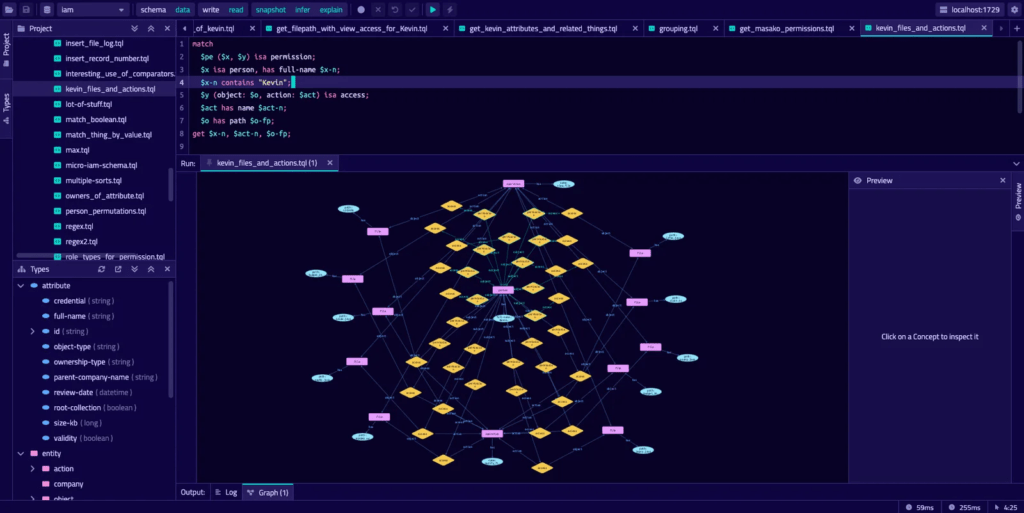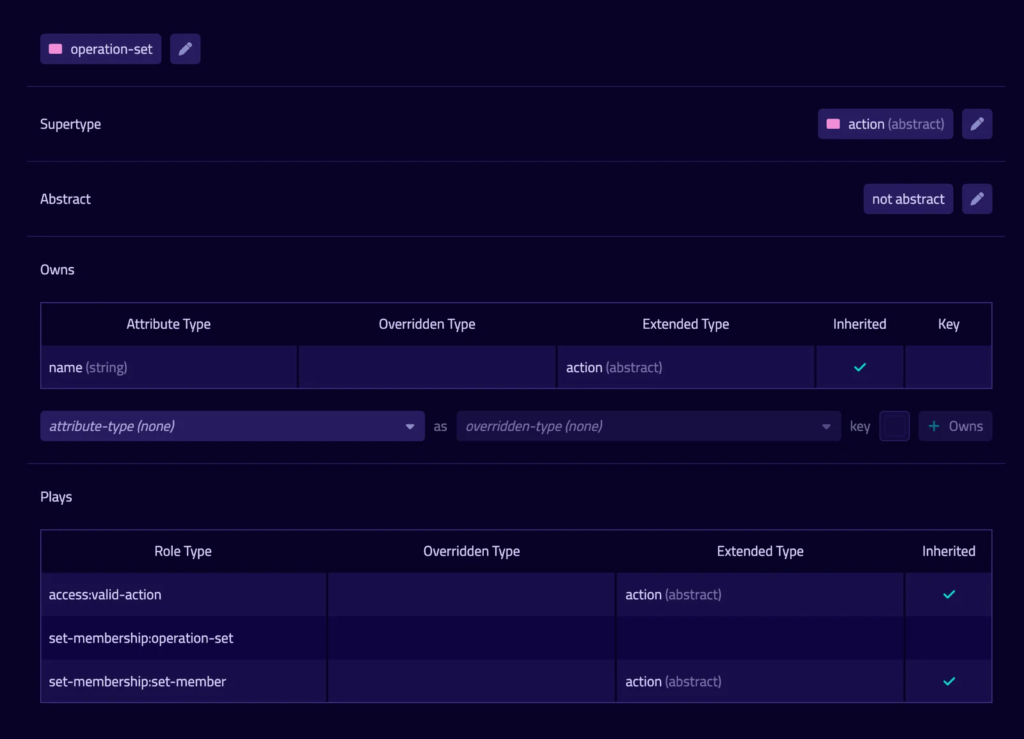Vaticle TypeDB
Update solution on July 26, 2023

Vaticle describes TypeDB as a strongly typed database and positions it as, essentially, an operational database which, like knowledge graphs, supports ontologies and inference without requiring the use of standards such as RDF and OWL. The idea is that it uses strong typing to create a natural, high-level, and easily understood data model that prioritises the relationships in your data while also embodying object-oriented programming principles, such as inheritance and polymorphism. This is then combined with its pattern matching and inference capabilities. It is also worth noting that TypeDB was originally created based on hypergraph theory, which extends conventional graph technology by supporting relationships between one or more nodes (which is to say, unary and n-ary relationships).

Customer Quotes
“TypeDB enables us to model the supply chains of large Global CPG clients and identify environmental and social risks. We have found its strongly typed nature and expressivity to be world leading, allowing our customers to gain novel insights. With TypeDB, we can solve problems at the world’s greatest companies.”
IBM
“TypeDB is a powerful framework for data exploration. The way data, attributes and relations can be expressed in a polymorphic manner allows us to build a rich network of multi-levels analysis and open opportunities to query, discover and infer interactions.”
Capgemini
TypeDB uses a persisted, enhanced entity-relationship data model that establishes entities, relationships, and attributes as the three possible types of data. This means that every piece of data must fall into one of these buckets, creating a natural hierarchy of types and type inheritance. The resulting models also have a natural correspondence to database schemas that can be leveraged for, say, schema creation. Notably, although TypeDB requires a schema, it has been built with flexibility in mind. For example, you can add, update, or delete entities, attributes and relation types in varying orders and combinations, even after data has already been loaded into the database, without breaking your existing model.

The fact that entities, relationships, and attributes are all first-class citizens in TypeDB means, for instance, that relationships can have both attributes and their own set of relationships. This helps to reduce the size of your graphs. Moreover, you can have a single relationship connecting any number of entities. The result is that TypeDB is highly expressive, and this should directly impact performance (less traversal) and cost (smaller graphs). In addition, you can create rules that can, among other things, act on relationships via their attributes. This means that you can effectively assign roles to relationships that then act as constraints, preventing you from, for instance, attaching them to inappropriately typed entities. This reinforces the notion that TypeDB is strongly typed, in much the same way that a programming language might be.
The product supports both type-based and rule-based inferencing. This is enabled by its automated reasoning engine, which is notable for readily handling highly permutative queries (that is, queries that deal with a significant amount of permutation). TypeDB can also use its reasoning engine in combination with user-defined rules to present simplified, dynamic views of inferred data at query time.
TypeDB and its data models are powered by its bespoke query language, TypeQL (formerly Graql). TypeQL has been designed to be declarative, removing the need to specify joins as part of your query; composable, allowing you to extend query scope on a largely ad hoc basis; and flexible, especially in terms of the level of abstraction it deals with. Its syntax is similar to Cypher, with a focus on being readable. Like TypeDB itself, TypeQL is open source.
Vaticle has two driving principles that have guided the continued development and refinement of TypeDB. The first is that data models should present data in a natural way that captures the interconnectedness of that data, while operating as a logical abstraction and adhering to established programming practices. It is clear even at a glance that this principle has carried through into much of the product’s design, including its recent positioning as a strongly typed database.
The second is that the improved data access and understanding provided by graph technologies – interconnectedness, inferencing and so on – should not be left in a niche but instead propagated to everywhere (and everyone) in the enterprise, thus maximising the benefits that graph provides. This idea is also present throughout the product, and felt most strongly in its ease-of-use-oriented features like inheritance and inference. The degree of abstraction that TypeDB and especially TypeQL provide is particularly powerful in this regard: by taking care of low-level concepts automatically and invisibly, novice users can onboard much more easily while advanced users can operate much more efficiently. This is particularly noticeable when it comes to building queries, where 5 lines in TypeQL might accomplish as much as 500 lines in SQL.
In terms of positioning, TypeDB can be deployed effectively as a knowledge graph. Indeed, in its previous life as Grakn, this was its primary use case. More recently, it has also gained traction as a middle ground between operational and analytical graph databases. This is most apparent in its use in “intelligent operations” use cases, such as identify and access management and cyber threat intelligence, that are business critical but require more sophistication than, say, transaction processing.
The Bottom Line
TypeDB continues to provide an effective and innovative graph offering. Strong typing, the expressivity of its data models, its various ease-of-use features, and more combine to create a product that is both powerful and approachable.
Related Company
Connect with Us
Ready to Get Started
Learn how Bloor Research can support your organization’s journey toward a smarter, more secure future."
Connect with us Join Our Community
